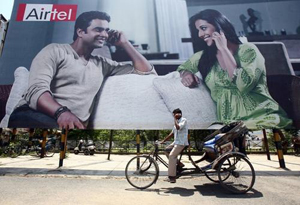Telecom Revolution in India.

India has world’s second largest telecommunication network based on the total number of both fixed and mobile telephone users with lowest call tariffs in the world enabled by the mega telephone networks and hyper-competition among them. Country has the world’s third-largest Internet user-base. According to the Internet and Mobile Association of India (IAMAI), the Internet user base in the country stood at 190 million at the end of June, 2013. Major sectors of the Indian telecommunication industry are telephony, internet and television broadcast Industry in the country which is in an ongoing process of transforming into next generation network, employs an extensive system of modern network elements such as digital telephone exchanges, mobile switching centers, media gateways and signaling gateways at the core, interconnected by a wide variety of transmission systems using fiber-optics or Microwave radio relay networks. The access network, which connects the subscriber to the core, is highly diversified with different copper-pair, optic-fiber and wireless technologies. DTH, a relatively new broadcasting technology has attained significant popularity in the Television segment. The introduction of private FM has given a fillip to the radio broadcasting in India. Telecommunication in India has greatly been supported by the INSAT system of the country, one of the largest domestic satellite systems in the world. India possesses a diversified communications system, which links all parts of the country by telephone, Internet, radio, television and satellite.
Indian telecom industry underwent a high pace of market liberalization and growth since the 1990s and now has become the world’s most competitive and one of the fastest growing telecom markets. The Industry has grown over twenty times in just ten years, from under 37 million subscribers in the year 2001 to over 846 million subscribers in the year 2011. India has the world’s second-largest mobile phone user base with over 929.37 million users as of May 2012. It has the world’s third-largest Internet user-base with over 137 million as of June 2012.
The total revenue of the Indian telecom sector grew by 7% to INR2832 billion (US$46 billion) for 2010–11 financial year, while revenues from telecom equipment segment stood at INR1170 billion (US$19 billion).
Telecommunication has supported the socioeconomic development of India and has played a significant role to narrow down the rural-urban digital divide to some extent. It also has helped to increase the transparency of governance with the introduction of e-governance in India. The government has pragmatically used modern telecommunication facilities to deliver mass education programs for the rural folk of India.

 Currency Convertor
Currency Convertor Post an article
Post an article Abhishek Sharma
Abhishek Sharma
 sending...
sending...




